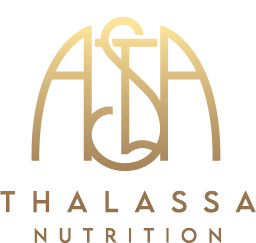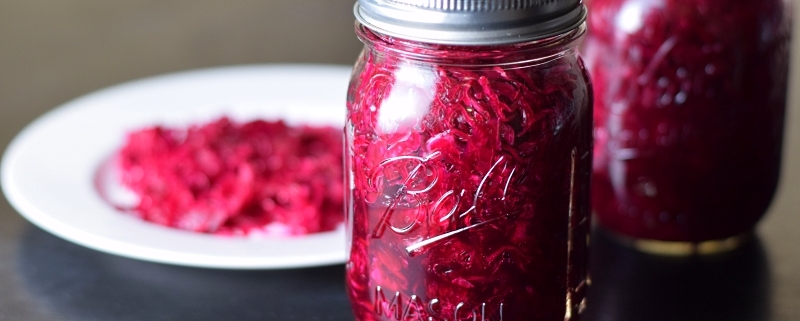fermented sauerkraut
We’ve already heard how Fermented Foods Can Heal Your Gut and Make Your Skin Glow thanks to health and wellness expert, Simone Samuels. But where does this ancient preservation technique come from and why has is gotten away from us? Could it be our busy, fast paced, instant-gratification lifestyle? Have we lost the patience for cultivation?
As I delve into the complex history of fermentation within human culture, my eyes are opened to a long lost art. Those on the forefront of whole foods nutrition and healthy digestion are not privy to this ancient preservation technique but they hope to share its secrets of longevity and well being for the benefit of all. Fermentation has been around as long as humans have cultivated crops. Once we gave up living in small nomadic groups and settled into larger communities, the need for a constant, reliable food source was apparent. With seasonal growing patterns, farmers began to farm on a grander scale and preserve harvests in various forms. At the forefront of this preservation was fermentation. Fermentation gives us our basic staples – bread and cheese. It also gives us our sinfully delicious desserts – chocolate, coffee and wine.
The process of fermentation begins when decay consumes one form and new life takes over, new life in the form of millions of microscopic interactions and processes. Complex organic molecules begin to breakdown and form smaller, more digestible organisms. The microscopic wizardry happens as bacteria and fungi, yeasts and molds do their thing, an absolutely essential process in the complex cycle of life. With the addition of salt and the air barrier created by the brine, harmful bacteria are kept at bay. This also creates the right conditions for beneficial bacteria like lactobacilli to thrive. When we eat food that has been fermented, these microorganisms help us digest efficiently and stimulate our immune system to function as it should.
There are misconceptions that while fermenting, one must use precise and complicated technology. According to the research of Sandor Ellix-Katz in his book Wild Fermentation, “cave paintings in locations as geographically diverse as India, Spain and South Africa depict images of people gathering honey in the Paleolithic period, as long as 12,000 years ago” (13). Still to this day, honey collectors from Ethiopia use nothing more than common sense, a keen sense of smell and a whole lot of patience when brewing mead, a fermented honey wine. While discovering the western world, Captain Cook knew the benefits of fermentation. With barrels upon barrels of sauerkraut on board, he and his crew evaded scurvy due to high amounts of Vitamin C present in the sauerkraut. In Korea today, kimchi is on the table at every meal and tempeh, originating in Java is one of Indonesia’s staple sources of protein. If it can be done with limited resources then we can certainly brew up a multitude of fermented magic in our own kitchens.
My intention is to inspire you to
experiment for yourself. With a little patience and a little effort,
you’ll discover what has been common knowledge for millennia, the way to
build a healthy army of intestinal flora to boost your immunity and
improve your digestion in your very own kitchen.I do indeed have an
array of jars with many a veggie inside, fermenting nicely under the
protection of its salty brine. My husband and I experiment by making our
own cold brewed rooibos kombucha, strawberry vanilla coconut kefir and
of course a random sampling of herb and veggie kraut, the most recent
being a fine-tuned Bold Brassica Kraut. It was so yummy, that I just had
to share it!
Bold Brassica Kraut
Time frame: 1-4 weeks (more salt, more time)
Special Equipment:
Ceramic
A weight of some sort (a jug filled with water, a scrubbed and boiled rock)
Cloth or mesh to cover and an elastic band to secure it with (a clean dish towel, a mesh nut milk bag)
Ingredients:
5 pounds of mixed vegetables including a medley of at least 50% cabbage, broccoli, cauliflower
3 tbsp. pink Himalayan Crystal salt
2 tbsp. cumin seeds
2 tbsp. crushed, dried curry leaf
A thumb-sized piece of fresh ginger, minced (about 1 inch)
Instructions:
1. Thinly Slice the Cabbage/Veggies (leave a few large leaves for the top layer)
2. Layer and Salt the Cabbage/Veggies Slices
3. Punch the Cabbage! (or pound it with a pestle). In order to get the culturing process started you’ll need to press (punch) the cabbage down into the crock or food-grade bucket for 5 or so minutes. Combined with the salt, this draws the water out.
4. Weigh Down the Cabbage. When ready to cover, arrange the whole leaves of cabbage over the top and make sure it is totally covered. The kraut should be submerged in its own brine after all the punching. Over the first 24 hours, check the kraut often and press it down to make sure that the water level rises to just above the cabbage. If after 24 hours there isn’t enough water to completely cover the cabbage, mix 1 teaspoon of sea salt with 1 cup of water and use this brine to fill in the water line to just above the level of the cabbage.
5. Check Sauerkraut to see if it is ready. Depending on the temperature of your kitchen, the humidity of your climate and the amount of salt used, the sauerkraut will take at least a week to ferment. I always leave it for 4 weeks! After the first day, you don’t have to check it until you are ready to eat it. You may see a slight scum on top, this is normal but I discard this top layer.
6. Store the Sauerkraut. Transfer the kraut to a mason jar and store in the fridge. It will keep for months in the refrigerator. Enjoy as a side dish, in salads, or on its own with a big spoon. Yum!

 no
no no
no NO
NO